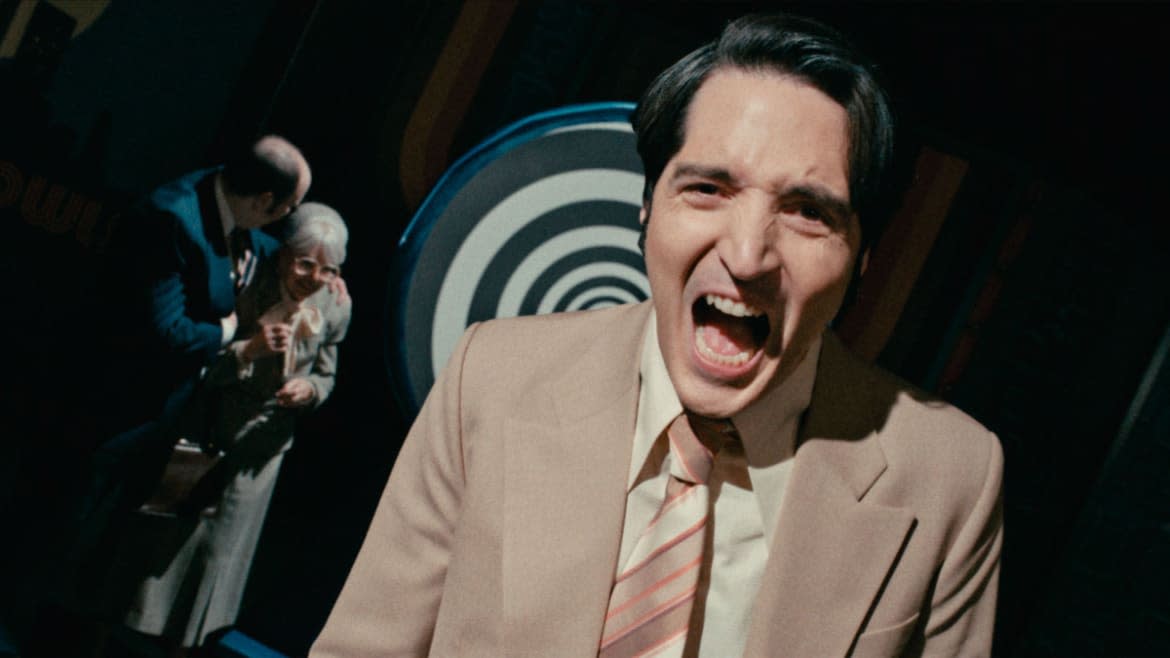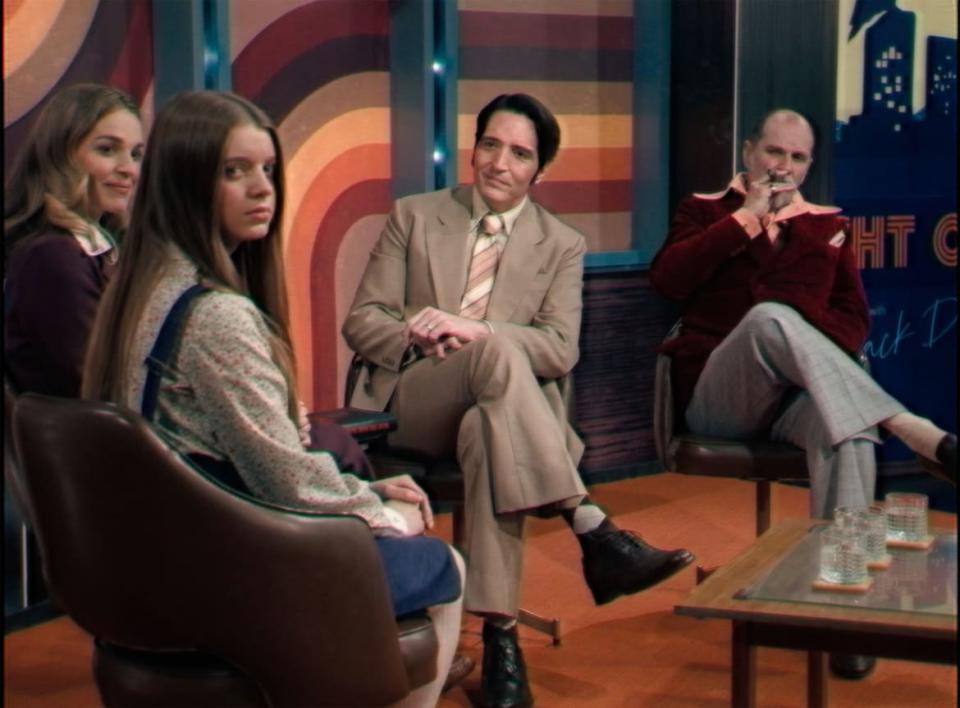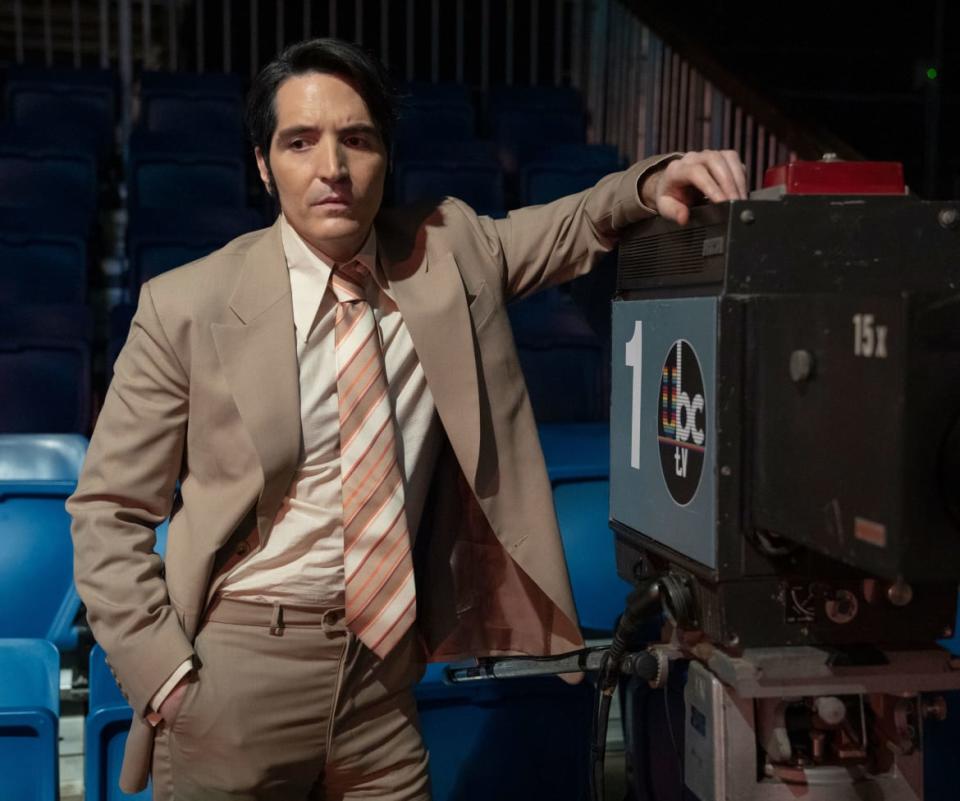‘The Exorcist’ Goes on Late-Night TV in a Fun Found-Footage Horror Movie

- Oops!Something went wrong.Please try again later.
“Ladies and gentlemen, please stay tuned for a live television first, as we attempt to commune with the Devil… but not before a word from our sponsors.” In Late Night with the Devil, the Australian brothers Cameron and Colin Cairnes recreate the atmosphere of a 1970s talk show, where the roster of the usual guests—Z-listers, creepy creatures and their handlers, spoon-benders—is augmented by the spectral presence of a servant of Abraxis. Late Night with the Devil isn’t scary enough to keep you awake all night, but if you’re up at the witching hour anyway, this tribute to a golden age of horror and a silver age of television is lovingly kitschy enough to make you stop spinning the dial.
The film purports to be a lost broadcast, the rediscovered transmission of an infamous episode of the fictitious UBC network’s Night Owls; the action unfolds mostly in real time, augmented with supposed behind-the-scenes footage taken during the commercial breaks. It’s the Halloween 1977 episode, apparently aired live; the camera pans across a studio audience in costumes and the announcer’s voice reads out the evening’s guests: a touring psychic, a Vegas magician turned debunker of spiritualist frauds, and the author of a book purporting to tell a true story of demonic possession… along with her 13-year-old subject.
The show’s increasingly flappable host is Jack Delroy, played by David Dastmalchian, who with his floppy forelock, boyish voice, and anxious energy has something of Conan O’Brien about him. Assisted by his bandleader-sidekick and frequent butt of jokes Gus (Rhys Auteri), Jack hopes to take on Johnny Carson and The Tonight Show with a sweeps-week stunt that will bring the show “back from the fuckin’ dead.” Behind and before the camera, Jack is surrounded by cynical showbiz lifers who would, as the saying goes, sell their souls for ratings. That the slogan of the show’s presenting sponsor is “Let’s shake on it” suggests how literally the film will take the metaphor of the entertainment industry as a devil’s bargain.
Jack and his guests make references to Amityville and Ed and Lorraine Warren—October of 1977 was when The Amityville Horror by Jay Anson began its time on the New York Times Bestseller List—and everyone on the show has clearly seen The Exorcist. For the bulk of the film, Jack presides with Cavett-lite gravitas over a debate between a parapsychologist (Laura Gordon) and her young charge (Ingrid Torelli)—who represent the woo-woo inclinations of the New Age movement’s mainstream crossover as well as the more lurid side of the zeitgeist, which made hits out of Rosemary’s Baby and The Omen—and the pompous, goateed skeptic (Ian Bliss) who describes ectoplasm and levitation as so many hoary carnival tricks.

Laura Gordon, Ingrid Torelli, David Dastmalchian, and Ian Bliss
The 1970s was a high point for American horror and the Cairnes brothers join a list of filmmakers, notably including Ti West, who have paid homage to the aesthetics of the era. They have fun building their own talk show: Production designer Otello Stolfo is a veteran of Australian television, and devised a set with more earth tones than NBC’s Proud N logo. The actors look pallid under the tungsten glare of vintage overhead lights; one character smokes on-air throughout, while wearing a polyester-blend shirt with a collar so wide that you suspect he might have to go through doors sideways. The Night Owls opening credits, set to light jazz-funk that goes down easier than a Tequila Sunrise, make use of rudimentary digital effects and stock footage of the then-recently opened Twin Towers, before segueing into stiled banter and a plausibly hacky Billy Carter joke.
As found footage, the film is less convincing. It begins with an eight-minute montage setting the historical moment—napalm, the gas crisis, protests, Manson—and the history of the show, all of which could have been excised entirely with a bit of judicious exposition in Delroy’s opening monologue. Often shooting with three cameras running simultaneously, the directors cheat a little with the grammar of a studio broadcast, cutting to close-ups and reaction shots that a television director wouldn’t use. And they cheat a lot with the behind-the-scenes footage, as characters scurry around backstage and pause for makeup touch-ups, captured in handheld black-and-white footage that, based on the crosscutting, would have involved multiple cameras recording synched sound operating for no clear reason. The film is less than fully committed to appearing to be an authentic cursed media artifact at the center of an urban legend. This isn’t exactly The Blair Witch Project.

David Dastmalchian
Ultimately the most faithful elements of the film’s pastiche are the set pieces taken more or less directly from the movies it references, whether it’s the strangulated voice of a demon speaking through the mouth of a tween girl (à la Linda Blair) or an electrical storm conflating broadcast interference to bad psychic juju in the manner of Poltergeist. There is one strikingly original sequence, though: a grossout showcase for the film’s most elaborate practical effects, then replayed on studio monitors to starkly different effect, suggestive of television as a medium of mass hypnosis. It’s apt for a film set in the wake of Tricky Dick Nixon and defeat in Vietnam, a decade in which American cultural commentators leaned heavily on the ideas of Marshall McLuhan (“the medium is the message”) to reckon with television’s power to shape public opinion.
Brief, staticky glitches and flickers in the Night Owls footage, de rigueur for the rabbit-ears decades, also suggest a ghost in the machine of broadcast television, like a three-network-era precursor to films like The Ring and Pulse, which explored the uncanny implications of the early Internet Age and viral culture. Late Night with the Devil is hardly era-defining in the way of those turn-of-the-century films, but in its lively dialogue and hammy performances, it exhibits an old-school flair for showmanship, appropriate for its riff on the flim-flam of light entertainment.
Get the Daily Beast's biggest scoops and scandals delivered right to your inbox. Sign up now.
Stay informed and gain unlimited access to the Daily Beast's unmatched reporting. Subscribe now.

